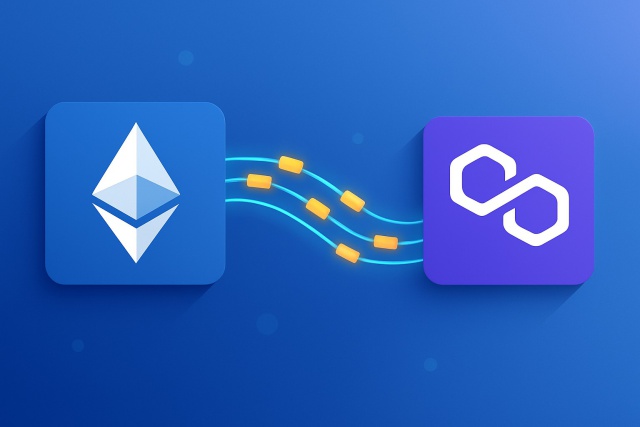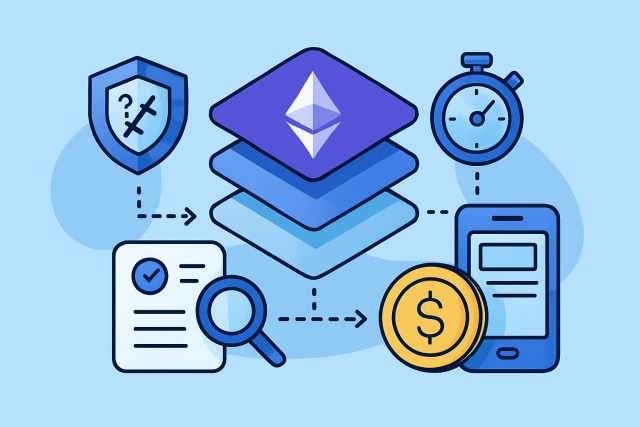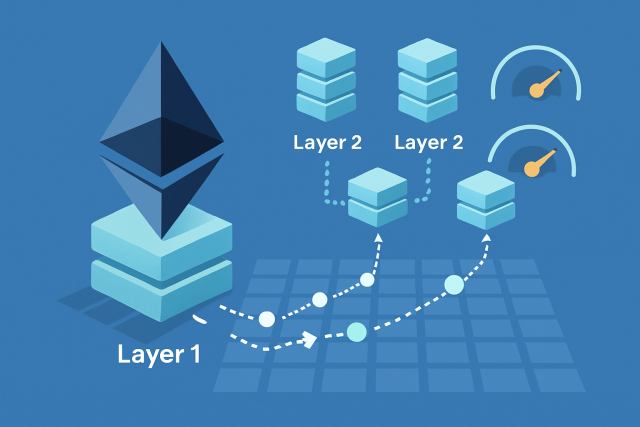Layer 2 Scaling Solutions Explained Simply

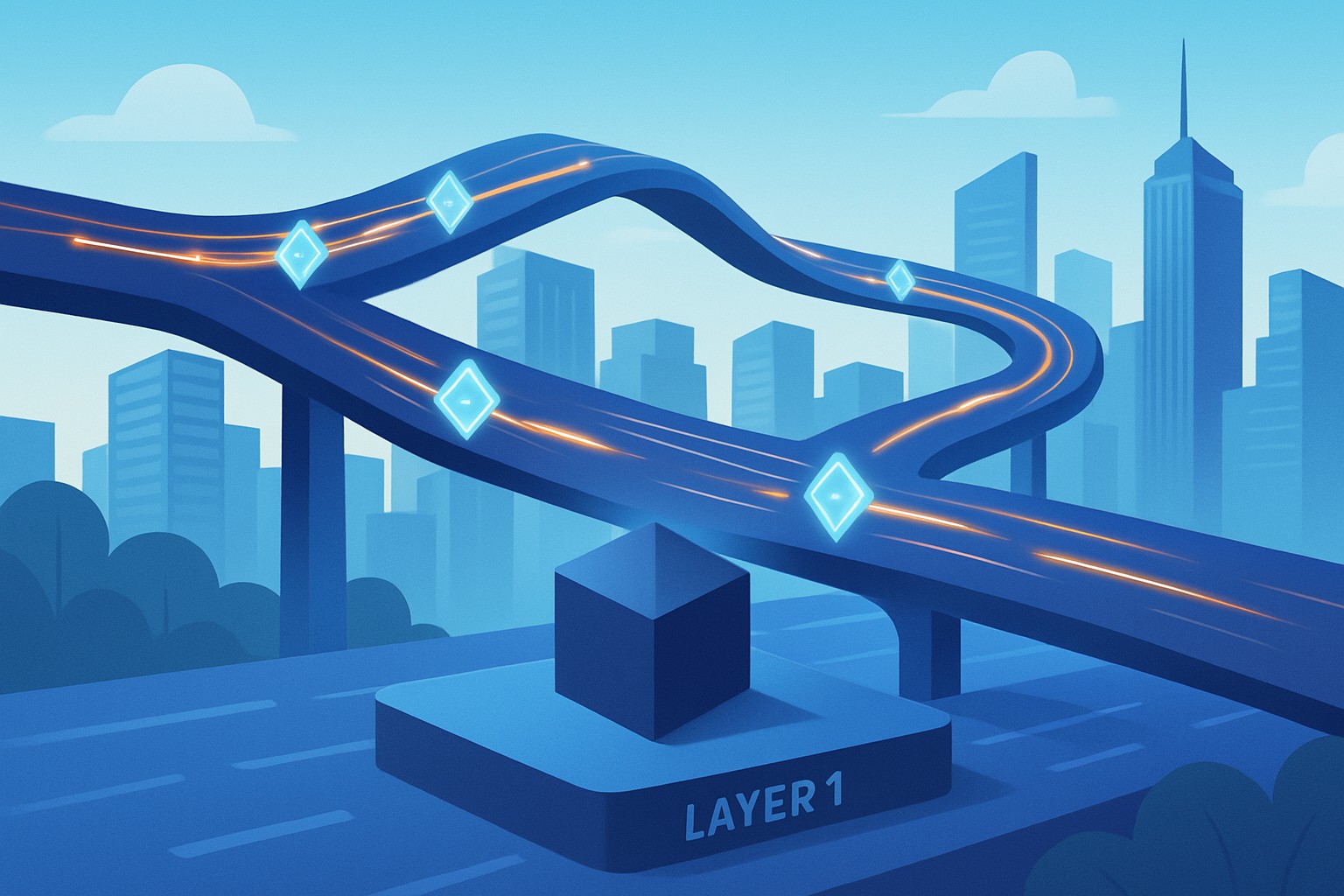
Layer 2 scaling solutions are quite the unsung heroes when it comes to giving blockchain performance a much-needed boost, especially on popular networks like Ethereum. By taking the load off the main blockchain and handling transactions elsewhere, they manage to speed things up and trim down those pesky fees.
What Is Layer 2? A Friendly and Straightforward Introduction
Blockchains like Ethereum often hit a wall with scalability since they can only handle a limited number of transactions per second. When traffic picks up, things slow down and fees climb—nothing surprising really. Layer 2 steps in as a sidekick built on top of the main blockchain. It is designed to handle more transactions faster and cheaper.
- Blockchains often hit the brakes when a crowd of users jump in all at once.
- Transaction fees typically shoot up as everyone scrambles for the limited room available.
- Network congestion leads to delays, turning processing times into a bit of a wild card.
Think of the main blockchain as a packed highway with just a few lanes. When it gets crowded cars start crawling and drivers pay hefty tolls to speed up. Layer 2 is like an express lane above that highway letting many cars cruise more smoothly and reach their destinations faster.
What Exactly Are Layer 2 Scaling Solutions and How On Earth Do They Work?
Layer 2 solutions bundle up multiple transactions off-chain, letting them zip through much faster without bogging down the main blockchain. After these transactions are safely handled off-chain, a neat summary gets posted back to Layer 1. This clever approach keeps security and decentralization firmly in place.
A user kicks off a transaction on a Layer 2 platform and sets things in motion.
That transaction then hops off the main blockchain highway and travels alongside others.
All these off-chain transactions get bundled into one tidy batch like a batch of emails you finally decide to send at once.
The batch data is then sent to Layer 1 where it’s verified and sealed on the main blockchain, locking everything in place.
Layer 2 solutions handle transactions off-chain, but they still lean heavily on the rock-solid security provided by Layer 1. By routinely posting summaries back to the main blockchain, they keep things trustless and make certain that finality isn’t just wishful thinking.
Key Types of Layer 2 Scaling Solutions
Let's dive into the main players in the world of Layer 2 scaling solutions. These techniques aren’t just tech jargon—they’re the secret sauce making blockchain networks faster and more efficient, without breaking a sweat.
- State Channels
- Rollups
- Sidechains
- Plasma
Each flavor of Layer 2 tackles scalability with its own unique charm. State channels let you handle private transactions off-chain, keeping things neat and quiet. Rollups gather a bunch of transactions into one big batch before filing them away on the main chain—kind of like digital laundry day. Sidechains function like their own little blockchains, but they’re happily connected to the main network.
| Name | How It Works | Security Model | Typical Use Cases | Pros | Cons |
|---|---|---|---|---|---|
| State Channels | Private lanes where participants transact off-chain, keeping things speedy and smooth | Depends on Layer 1 for settling disputes | Micropayments, gaming, exchanges | Delivers instant finality with minimal fees — the kind of quick results everyone likes | Everyone has to stay online; only works well with parties you actually know |
| Optimistic Rollups | Bundle up transactions off-chain and give everyone the benefit of the doubt unless proven otherwise | Relies on fraud proofs | General Ethereum scaling | Packs a punch with high throughput, solid security, and plays nicely with existing apps | Withdrawals take a bit of patience due to the fraud proof waiting period |
| ZK Rollups | Use zero-knowledge proofs to seal the deal on batches right away, no ifs or buts | Cryptographic proofs verified on-chain | Payments, DeFi, NFTs | Lets you cash out fast while keeping security tight as a drum | The tech is pretty complex and tends to raise development costs |
| Sidechains | Standalone blockchains hooked to the main chain through bridges, doing their own thing | Security depends on sidechain validators | Gaming, specialized apps | Offers plenty of scalability and room to customize | Generally not as bulletproof as Layer 1; those bridges can be a bit of a weak spot |
| Plasma | Child chains using fraud-proof setups that only settle legit transactions | Fraud proofs model | High-volume micropayments | Great at scaling and lightening the mainchain load | Getting out can be a bit of a headache; not the most flexible |
State Channels
Think of state channels as an off-the-beaten-path shortcut for blockchain transactions. Instead of every little move having to shout out to the main chain, participants can sort things out among themselves, quickly and quietly. It’s like having a private room where changes happen in real-time before everyone reconvenes to settle the final score on the main stage. This clever workaround helps dodge the usual traffic jams and high fees that come with public blockchains, making interactions smoother and often faster than you’d expect.
State channels create a private line of communication between two or more parties, letting them handle multiple transactions off the main chain without logging every single step. When the channel finally closes, only the last agreed-upon state gets submitted.
Getting to Grips with Rollups
Rollups bundle up multiple transactions off-chain and then send back a compressed version of the data to Layer 1. Optimistic rollups basically take the optimistic route, assuming transactions are all good unless someone raises a red flag. On the flip side, ZK rollups don’t leave things to chance—they use cryptographic proofs to verify transactions on the spot.
Diving Into the World of Sidechains and Plasma
Sidechains are independent blockchains that run alongside the main chain and link up through bridges. They bring a lot of room for customization, although you do usually give up a bit on security guarantees in the process. Plasma works by spinning up child chains that bundle transactions together and lean on fraud proofs to ensure only legit transactions make their way onto the main chain.
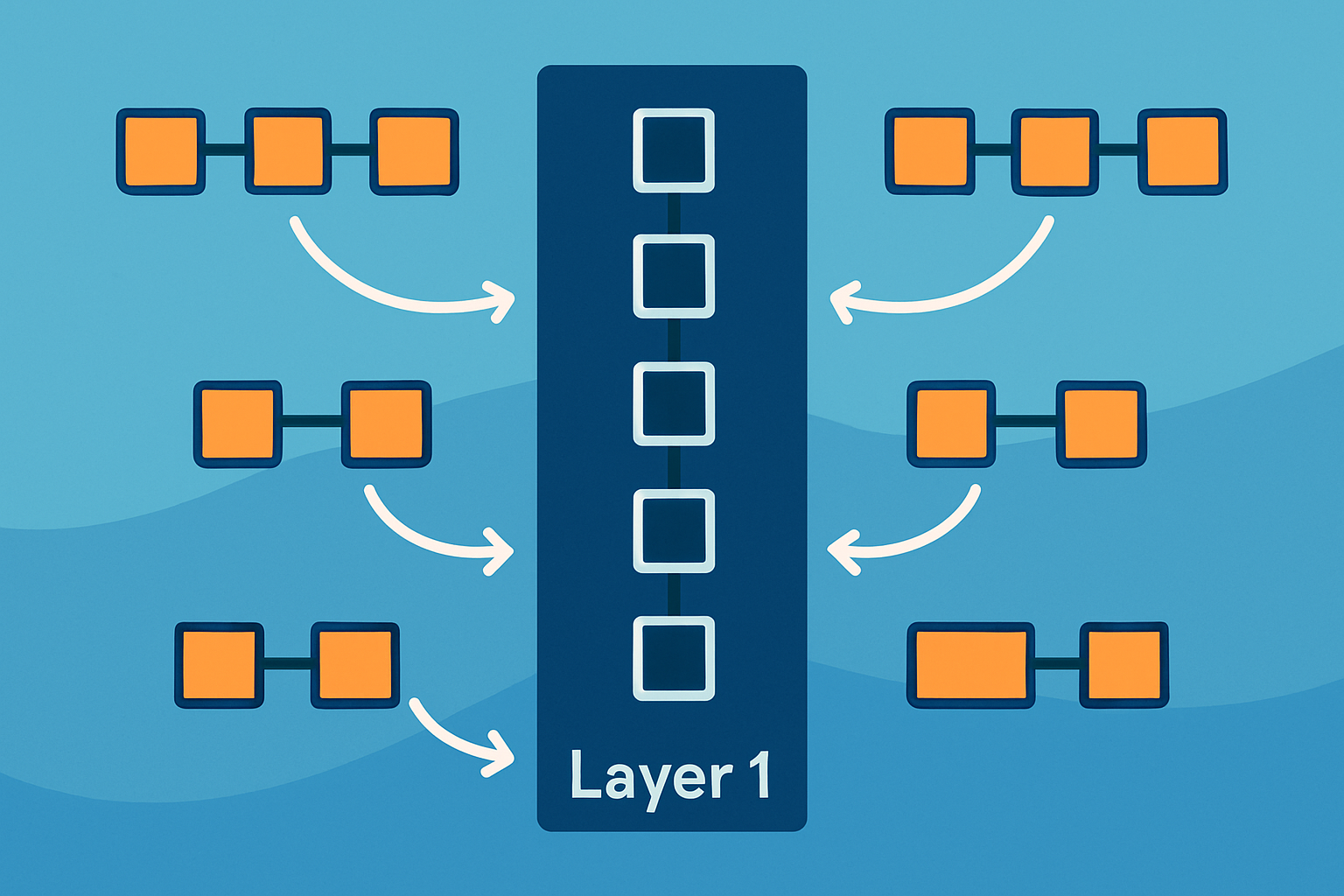
Why Do Layer 2 Solutions Matter So Much?
Layer 2 solutions often step in to address the blockchain trilemma by boosting scalability without throwing decentralization or security out the window.
- Transactions become quicker and less costly, which encourages people to use them more often.
- Users generally find their experience smoother and more enjoyable when dealing with decentralized apps, cutting down the usual headaches.
- Layer 2 solutions really step in to ease network congestion, helping to dodge those frustrating slowdowns during peak times.
- They make blockchain technology feel a lot more practical for everyday use, paving the way for broader adoption.
Layer 2 is a bit like that express lane on a jam-packed highway—helping a whole bunch of travelers zip along smoothly, all while keeping things fair and safe, no shortcuts taken.
Practical Examples of Layer 2 Solutions in Action Real-World Wins You Can’t Ignore
Several Layer 2 platforms are out there hustling to boost blockchain performance. Polygon offers a popular sidechain solution that many individuals rely on, while Arbitrum takes a clever approach with optimistic rollups to help Ethereum scale smoothly. Then there’s zkSync, which brings to the table lightning-fast and secure zero-knowledge rollups. Meanwhile, the Lightning Network lets you zip through Bitcoin payments almost instantly using payment channels.
- Polygon is a go-to choice in gaming and DeFi circles since its sidechain scales like a champ.
- Arbitrum tends to attract developers looking for that sweet spot of Ethereum compatibility paired with friendlier fees.
- ZkSync is steadily gaining traction for payments and NFT minting, thanks to its impressively quick finality.
- Lightning Network speeds up Bitcoin, making those tiny micropayments and everyday transactions feel almost effortless.
User experience can really vary across these platforms. Polygon offers a pretty seamless integration with loads of dApps, making it feel quite user-friendly. Arbitrum shines thanks to its solid developer backing and the comfort of using familiar Ethereum tools—it’s like sticking with an old friend. zkSync’s zero-knowledge technology is a neat trick that lets you pull out your funds lightning fast. Meanwhile, the Lightning Network steals the show with instant Bitcoin payments.
Challenges and Limitations of Layer 2 Scaling Solutions That You Should Keep in Mind
Layer 2 solutions definitely give blockchain performance a nice boost but they’re not without quirks. You have to watch out for security trade-offs and occasional delays when moving funds back down to Layer 1. There is also the headache of tricky interoperability between different Layer 2s.
- Some rollups have a built-in delay before your funds can be fully withdrawn that acts like a safety net against fraud—a 'better safe than sorry' approach.
- Liquidity is often spread thin across different Layer 2 solutions which can make moving assets feel like playing hopscotch.
- Newcomers face a learning curve since they have to juggle extra wallets or use bridging tools. It’s like juggling flaming torches at first but you get the hang of it.
- Layer 2 depends heavily on the security of the underlying Layer 1 chain so if there’s a weak spot, it can ripple up and affect the whole system's safety.
Picking the Right Layer 2 Solution for Your Needs A Handy Guide to Cut Through the Noise
Choosing among Layer 2 scaling solutions boils down to a handful of things: how serious you are about security, the number of transactions you're expecting, your budget for fees and the type of app you plan to build or use.
Kick things off by clearly defining your main use case whether you’re diving into payments, gaming or DeFi. It’s helpful to have that crystal clear from the start.
Consider how much you value security compared to speed and fees because sometimes you have to pick your battles here.
Take a close look at how transaction costs and processing times compare across the different Layer 2 options since those small details can make a big difference.
Test the user experience to ensure it’s not only functional but also works smoothly with your wallet. No one enjoys a frustrating setup.
Remember to factor in the developer community and ecosystem support because having a solid crew in your corner is important when planning for growth down the line.


